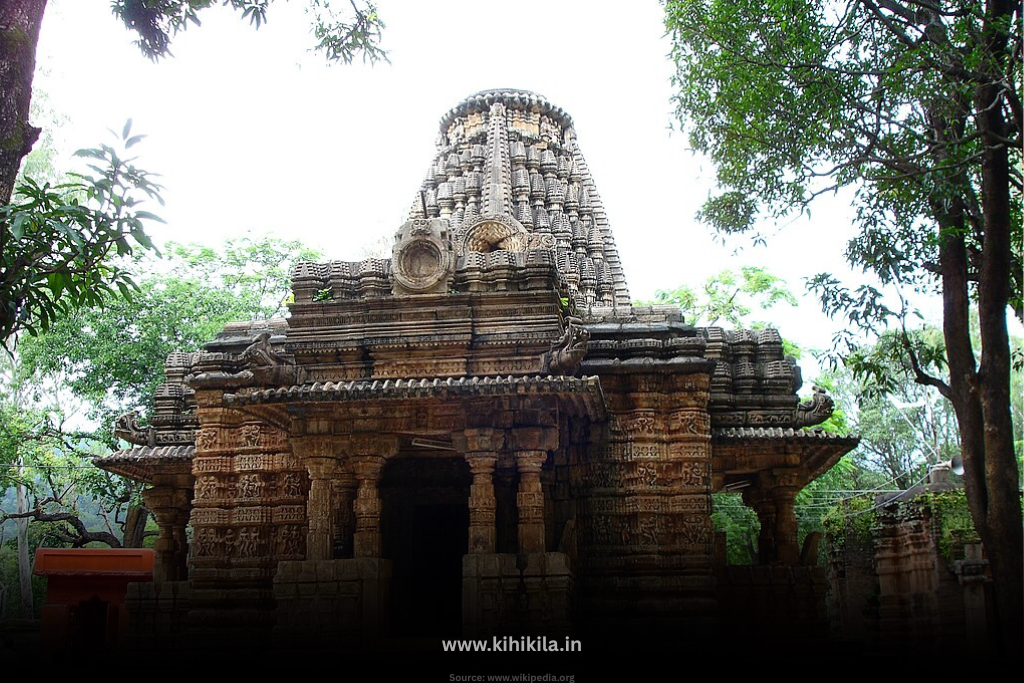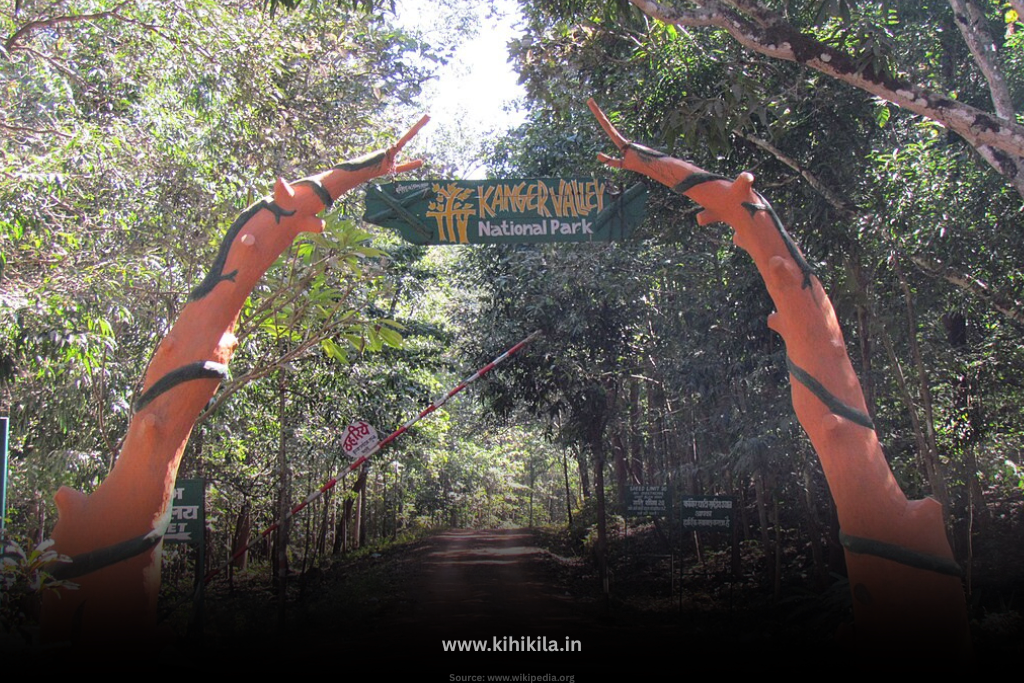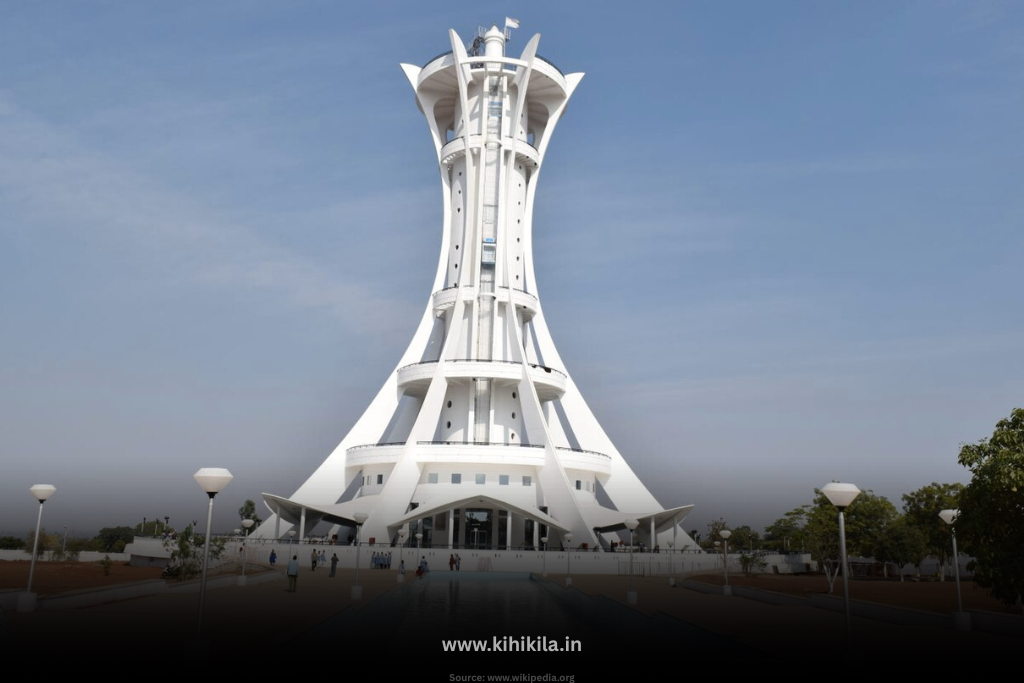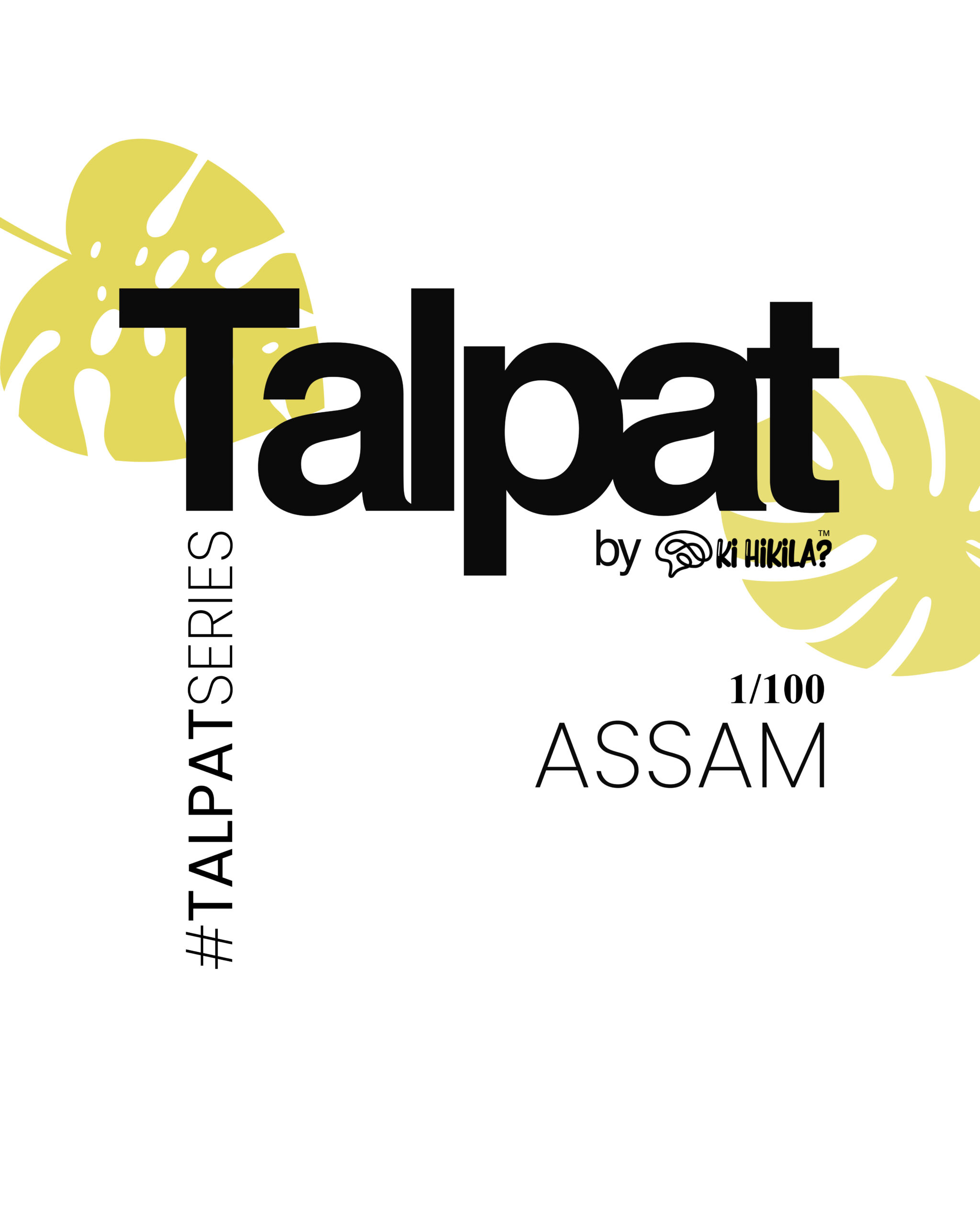Introduction
Chhattisgarh, often referred to as the “Rice Bowl of India,” is a culturally rich and naturally abundant state nestled in central India. Known for its dense forests, tribal communities, and centuries-old traditions, the state offers a unique blend of heritage and modern development. While it might not be as widely publicized as some other Indian states, Chhattisgarh holds its charm with untouched natural beauty, vibrant folk culture, and significant mineral wealth. Whether it’s the rhythmic beats of tribal dances, the serenity of waterfalls, or the depth of historical significance, Chhattisgarh presents a lesser-known but compelling story of India’s diverse identity.
Brief About the State
Chhattisgarh, carved out of Madhya Pradesh in the year 2000, is one of India’s youngest states yet deeply rooted in ancient civilization. With Raipur as its capital, it covers an area of approximately 135,192 square kilometers, making it the ninth-largest state in India. Chhattisgarh is home to more than 30 tribal communities, many of whom have preserved their distinctive customs, languages, and lifestyles for generations. The state’s economy thrives on agriculture, energy production, and mineral resources like coal, iron ore, and bauxite.
Despite its rapid industrial growth, Chhattisgarh continues to maintain a strong cultural identity through folk dances like Panthi and Raut Nacha, vibrant festivals, and a profound respect for nature. Its lush forests, which account for about 44 percent of its area, are rich in biodiversity and contribute significantly to the region’s ecological balance. As a state that bridges traditional life with modern aspirations, Chhattisgarh stands out as a region of untapped potential and deep cultural wealth.
Location and Geography
Chhattisgarh is situated in central India and shares its borders with seven states — Madhya Pradesh to the northwest, Maharashtra to the west, Telangana to the south, Odisha to the east, Jharkhand to the northeast, Uttar Pradesh to the north, and Andhra Pradesh to the southeast. This strategic location in the heart of India gives it a unique geographic and economic position.

The state lies between latitudes 17°46′N and 24°05′N, and longitudes 80°15′E and 84°20′E. Chhattisgarh is part of the Deccan Plateau, and its terrain includes plateaus, hills, plains, and dense forests. The state is known for its rich natural resources, with abundant forests, mineral wealth, and water bodies that nourish its fertile lands. A significant part of the state is covered by the Maikal Hills and the Satpura range, adding to its geographic diversity.
Historical Importance
Chhattisgarh has a rich and layered history that dates back to ancient times. The region finds mention in ancient scriptures and epics like the Ramayana and Mahabharata, where it was referred to as “Dakshin Kosala.” It is believed that Lord Rama spent a significant part of his exile in this region.
During ancient and medieval periods, Chhattisgarh was ruled by various dynasties such as the Mauryas, Satavahanas, Kalachuris, and the Nagvanshi kings. The Kalachuri dynasty, in particular, left behind numerous temples and monuments that still stand as architectural and cultural markers.
In the colonial era, Chhattisgarh became a part of the Central Provinces under British rule. However, the tribal communities in the state fiercely resisted colonial exploitation. Notable freedom fighters like Veer Narayan Singh emerged from this land and played a vital role in India’s struggle for independence.
Chhattisgarh was carved out of Madhya Pradesh and officially became a separate state on November 1, 2000, making it one of India’s youngest states. This decision was made to give better governance and recognition to its unique tribal and cultural identity.
Geography & Climate
Topography
Chhattisgarh’s landscape is marked by a mix of lush forests, fertile plains, and rolling hills. The state lies in the heart of India and is part of the Deccan plateau. It consists of three major geographical divisions:
- Northern Hills (Surguja region): Hilly and forested, rich in mineral deposits.
- Central Plains (Raipur-Bilaspur-Durg region): Fertile and ideal for agriculture.
- Southern Bastar Plateau: Densely forested and inhabited largely by tribal communities.
Major Rivers, Mountains, and Forests
- Rivers: The Mahanadi River is the lifeline of Chhattisgarh, flowing eastward into Odisha. Other important rivers include Indravati, Hasdeo, Arpa, and Shivnath.
- Mountains: The Maikal Hills in the north and Abujhmar Hills in the south add to the state’s rugged beauty.

- Forests: About 44% of Chhattisgarh is under forest cover. The Dandakaranya forest region is particularly significant both ecologically and mythologically.
Climate and Seasonal Patterns
Chhattisgarh experiences a tropical climate with three distinct seasons:
- Summer (March to June): Hot and dry, with temperatures reaching up to 45°C.
- Monsoon (July to September): Receives heavy rainfall, especially in forested regions.
- Winter (October to February): Pleasant and cool, with temperatures ranging between 10°C to 25°C.
The climate, coupled with rich soil and water resources, makes the state ideal for agriculture and forestry.
Demographics
Population (Latest Available Statistics)
As per the latest estimates based on the 2011 Census and projected growth, Chhattisgarh has a population of around 3.2 crore (32 million). The population density is approximately 189 persons per square kilometer, which is lower than the national average, reflecting its vast forested and rural landscapes.
- Urban population: About 23%
- Rural population: Nearly 77%, highlighting the state’s predominantly agrarian and tribal society
- Sex ratio: 991 females per 1000 males (above the national average)
- Literacy rate: Around 71%, with higher literacy levels in urban areas compared to rural regions
Major Languages Spoken
- Chhattisgarhi (widely spoken in the central plains)
- Hindi (official language and used in administration and education)
- Gondi, Halbi, Kurukh, and Bhatri (spoken by tribal communities in different districts)
Ethnic Groups and Religions
- Tribal population: Constitutes nearly 30% of the state’s total population. Major tribes include Gond, Baiga, Halba, Korwa, and Maria.
- Scheduled Castes: About 13%
- Religious Composition:
- Hinduism: ~93%
- Islam: ~2%
- Christianity and others: Remaining portion, mostly among certain tribal groups
Chhattisgarh is known for its peaceful coexistence of various communities, especially its vibrant tribal cultures that enrich the social fabric.
Administrative Setup
Capital City and Major Cities
- Capital: Raipur – the largest city and administrative, commercial, and educational hub of the state.
- Major cities:
- Bilaspur – known for legal institutions and railway zone headquarters
- Durg-Bhilai – twin cities recognized for steel production and educational institutions
- Korba – an industrial town, important for power generation
- Jagdalpur – major town in the Bastar region with tribal prominence
Districts
Chhattisgarh currently has 33 districts, following recent administrative divisions for improved governance. Notable districts include:
- Bastar – culturally rich and home to tribal populations
- Raigarh – industrially developed
- Kanker, Dantewada, Bijapur – known for their forest cover and tribal settlements
Political Significance
- Governance: The state has a unicameral legislature with 90 seats in the Legislative Assembly.
- Parliamentary representation:
- 11 Lok Sabha seats
- 5 Rajya Sabha seats
- Current political climate: Chhattisgarh has seen alternating governance between the Indian National Congress and the Bharatiya Janata Party, reflecting a dynamic political landscape.
- The state follows the Panchayati Raj system in rural areas, empowering local self-governance.
Chhattisgarh’s administrative structure plays a key role in managing its vast tribal belt and resource-rich regions.
Culture and Traditions
Chhattisgarh’s culture is a vivid reflection of its tribal heritage, age-old customs, colorful festivals, and artistic expressions. Rooted in simplicity and tradition, the state’s cultural identity is both unique and rich in diversity.
Traditional Clothing, Festivals, and Customs
- Traditional attire:
- Men: Dhoti, angavastra, and headgear like pheta or turban
- Women: Saree worn in traditional styles, often adorned with tribal jewelry and beadwork
- Festivals:
- Bastar Dussehra – celebrated for 75 days, it’s one of India’s longest festivals, focusing on tribal rituals and devotion to goddess Danteshwari
- Teeja, Hareli, Pola, and Goncha are significant agricultural and nature-based festivals celebrated with folk rituals
- Customs: Tribal communities observe rituals tied to nature worship, ancestor reverence, and communal harmony
Music, Dance, and Art Forms
- Folk music: Dominated by devotional and agricultural themes; instruments like mandar, dhol, bansuri are widely used
- Folk dances:
- Panthi – spiritual dance of the Satnami community
- Raut Nacha – performed by the Yadav community
- Saila and Karma – popular tribal dances during festive seasons
- Art:
- Godna (tattoo) art, tribal wall paintings, and bamboo crafts
- Terracotta figures and bell metal (Dhokra) art from Bastar region are globally admired
Folk Stories or Legends
- The region is filled with tribal folktales passed down orally, many revolving around bravery, community values, and spiritual guardians like Budha Dev.
- Local myths often blend animism with Hindu beliefs, creating a distinctive storytelling culture.
Chhattisgarh’s cultural canvas offers a deep sense of continuity with nature, spirituality, and artistic creativity.
Flora and Fauna of Chhattisgarh
Chhattisgarh is home to one of the richest biodiversity zones in India, with nearly 44 percent of its land under forest cover. The state’s dense forests, wildlife reserves, and unique ecosystems contribute to its ecological wealth.
Native and Unique Plant Species
- Sal (Shorea robusta), Teak (Tectona grandis), and Bamboo are among the dominant tree species.
- Medicinal plants like Sarpagandha, Ashwagandha, Giloy, and Kalmegh are found abundantly in the wild, many of which are used in tribal medicine.
- The Tendu tree, whose leaves are used for making bidis (local cigarettes), is economically vital.
Endangered or Iconic Animal Species
- Tigers, leopards, sloth bears, wild dogs, and gaurs (Indian bison) roam freely in protected forest areas.
- Barasingha (swamp deer) and four-horned antelope are among the rare species found in select regions.
- Reptiles like Indian python, monitor lizards, and king cobras are also part of Chhattisgarh’s wildlife diversity.
Important National Parks, Sanctuaries, and Biosphere Reserves

- Indravati National Park: A core zone of the Tiger Reserve, known for its tiger population and riverine ecosystem.
- Kanger Valley National Park: Famous for its limestone caves, waterfalls, and dense tropical forests.
- Achanakmar Wildlife Sanctuary: Part of the Achanakmar-Amarkantak Biosphere Reserve, rich in flora and fauna diversity.
- Barnawapara Wildlife Sanctuary and Sitanadi Sanctuary are also significant for conservation and ecotourism.
Chhattisgarh’s forests not only preserve ecological balance but also sustain tribal life and traditions that are deeply connected to nature.
Economy of Chhattisgarh
Chhattisgarh has emerged as one of India’s fastest-growing states economically, driven by its rich mineral resources, robust agricultural output, and growing industrial base. The state’s economy strikes a balance between rural and industrial sectors, contributing significantly to national development.
Main Industries
- Mining and Minerals: Chhattisgarh is a powerhouse of minerals—especially coal, iron ore, limestone, bauxite, and dolomite. It contributes over 15% to India’s total coal production.
- Steel and Power: Known as the “Power Capital of India,” the state is a hub for power generation and steel production. Major plants include Bhilai Steel Plant (SAIL) and several private sector giants.
- Cement and Aluminum: The availability of limestone has spurred the growth of a thriving cement industry.
- Handicrafts and Forest-based Industries: Forest produce like tendu leaves, lac, and sal seeds support a vibrant rural economy.
Agricultural Produce and Cash Crops
- Rice is the staple crop and the most widely cultivated, earning Chhattisgarh the title “Rice Bowl of Central India.”
- Other major crops include maize, pulses, oilseeds, wheat, and sugarcane.
- Minor forest produce and herbal crops also contribute significantly to rural livelihoods.
Contribution to India’s GDP
- Chhattisgarh contributes around 2% to India’s GDP.
- The GSDP (Gross State Domestic Product) is driven by industry (approx. 40%), followed by services and agriculture.
- The state has maintained a higher-than-average growth rate among Indian states in the past decade.
With a strong focus on infrastructure, MSME development, and inclusive rural growth, Chhattisgarh continues to strengthen its economic footprint in India.
Tourism in Chhattisgarh
Chhattisgarh, still relatively unexplored by mainstream tourism, offers a unique blend of natural beauty, ancient heritage, tribal culture, and spiritual experiences. Its scenic waterfalls, dense forests, heritage sites, and traditional villages make it an enriching destination for curious travellers and culture enthusiasts.

Top Attractions (Natural & Man-Made)
- Chitrakote Falls: Often called the Niagara Falls of India, located near Jagdalpur, this wide horseshoe-shaped waterfall is breathtaking during monsoons.
- Tirathgarh Waterfalls: Nestled in Kanger Valley National Park, it cascades through lush forests—an ideal picnic and photography spot.
- Bhoramdeo Temple: Known as the Khajuraho of Chhattisgarh, it features intricate stone carvings and dates back to the 7th–11th century.
- Barnawapara Wildlife Sanctuary and Kanger Valley National Park: Teeming with biodiversity and home to leopards, deer, wild boar, and numerous bird species.
UNESCO World Heritage Sites
- While Chhattisgarh currently does not have a designated UNESCO World Heritage Site, several locations such as Sirpur and Bastar have been proposed due to their historical and archaeological significance.
Spiritual and Religious Sites
- Dongargarh: The Maa Bambleshwari Temple, perched on a hill, is a key pilgrimage site.
- Rajim: Called the Prayag of Chhattisgarh, it’s where three rivers meet and is home to ancient temples dedicated to Vishnu.
- Sirpur: Once a flourishing Buddhist center, it holds ruins of monasteries and temples, including the famous Laxman Temple.
Food Tourism (Local Cuisines & Street Food)
- Chana Samosa, faraa (steamed rice dumplings), bafauri, and dehati chicken are local favorites.
- Tribal delicacies such as red ant chutney and dishes made from forest herbs offer a rare culinary experience.
- Mahua-based drinks, though not commercialized widely, are part of the indigenous culture.
From misty waterfalls to centuries-old temples and vibrant tribal culture, Chhattisgarh offers a rustic yet captivating travel experience that connects nature with heritage.
Education in Chhattisgarh
Chhattisgarh has made notable progress in the field of education since becoming a separate state in 2000. The government has prioritized expanding access to schooling and improving literacy rates, particularly in rural and tribal-dominated areas. According to the 2011 Census, the state’s literacy rate stands at around 71%, with steady improvements driven by various educational schemes and infrastructure development.
The state is home to several higher education institutions, including Indian Institute of Technology (IIT) Bhilai, All India Institute of Medical Sciences (AIIMS) Raipur, and National Institute of Technology (NIT) Raipur. Additionally, universities like Pandit Ravishankar Shukla University and Guru Ghasidas Vishwavidyalaya play a significant role in shaping academic advancement.
To promote primary and secondary education, Chhattisgarh has implemented programs such as the Sarva Shiksha Abhiyan and mid-day meal schemes. Efforts are also underway to enhance digital literacy and introduce smart classrooms in government schools. However, challenges persist in addressing disparities in educational quality across different regions and communities, particularly among tribal populations.
Healthcare in Chhattisgarh
The healthcare system in Chhattisgarh has seen gradual development, particularly in expanding access to basic health services across rural and tribal areas. The state government has prioritized public health through various schemes and infrastructure investments aimed at improving maternal and child health, controlling endemic diseases, and strengthening primary health centers.
Chhattisgarh was one of the first Indian states to roll out a universal health insurance scheme—Mukhyamantri Haat Bazar Clinic Yojana and Dr. Khubchand Baghel Swasthya Sahayata Yojana—which provide free medical checkups and affordable treatment to underserved populations. The Health and Wellness Centers (HWCs) model has also been adopted to bring preventive, promotive, and curative care closer to remote communities.
Raipur, the capital, houses advanced medical institutions such as AIIMS Raipur, which serves as a major hub for tertiary care. Despite these strides, challenges remain in terms of doctor-to-patient ratios, availability of specialists in remote regions, and infrastructure gaps in certain districts.
Efforts continue to build a more inclusive, accessible, and digitally enabled healthcare system to meet the needs of Chhattisgarh’s diverse population.
Infrastructure and Connectivity in Chhattisgarh
Chhattisgarh has made significant progress in enhancing its infrastructure and connectivity, with a strong focus on roads, railways, power, and digital services. The state’s central location in India makes it a strategic transit point, and continuous efforts are being made to turn it into a logistics hub.
Roadways and Highways
Chhattisgarh has an expanding network of national and state highways. Major cities like Raipur, Bilaspur, Durg, and Korba are well connected through four-lane highways. The Atal Vikas Path and Bharatmala projects have been instrumental in improving road quality and reducing travel time between districts and neighboring states.
Railways
The state is well connected by Indian Railways, with Bilaspur Railway Zone being one of the busiest zones in the country. It facilitates the transportation of minerals, coal, and industrial goods, making it vital to both freight and passenger movement. Major railway junctions include Raipur, Durg, Bilaspur, and Raigarh.
Air Connectivity
Swami Vivekananda Airport in Raipur offers regular flights to major cities such as Delhi, Mumbai, Kolkata, and Bangalore. The state is also exploring regional connectivity under the UDAN scheme to promote tourism and business in tier-2 and tier-3 cities.
Power and Energy
Known as the “Power Hub of India,” Chhattisgarh contributes significantly to the national power grid. It is rich in coal and hosts multiple thermal power plants and hydroelectric projects. Renewable energy projects, particularly in solar power, are also being developed to diversify the state’s energy mix.
Digital and Telecom Infrastructure
Digital infrastructure is improving steadily through programs like Digital India and BharatNet, aiming to provide high-speed internet to gram panchayats. E-governance services and mobile connectivity are being expanded to ensure rural access to essential services.
Overall, Chhattisgarh is evolving into a more connected and infrastructure-rich state, facilitating its economic development and social inclusion.
Transport and Connectivity in Chhattisgarh
Chhattisgarh’s transport network plays a vital role in linking the state’s vast mineral reserves, industrial zones, and forest-rich regions with the rest of India. The state has been strategically improving its multi-modal connectivity—through roads, railways, and airways—to support trade, mobility, and tourism.
Road Transport
- The state boasts over 55,000 km of roads, with several National Highways and State Highways crisscrossing key cities and industrial corridors.
- Major highway routes such as NH-30, NH-53, and NH-130 link Chhattisgarh with Maharashtra, Odisha, Madhya Pradesh, and Jharkhand.
- Public transportation is facilitated by Chhattisgarh State Road Transport Corporation (CGSRTC) and numerous private operators connecting towns and rural areas.
Railways
- Chhattisgarh lies on important rail corridors, notably in the South East Central Railway (SECR) zone headquartered in Bilaspur.
- Key railway junctions: Raipur, Bilaspur, Durg, Korba, and Raigarh.
- The rail network supports both passenger and heavy freight traffic, especially for coal, iron ore, and steel-related industries.
Air Transport
- Swami Vivekananda Airport (Raipur) is the primary airport, offering domestic flights to Delhi, Mumbai, Kolkata, Hyderabad, and Bengaluru.
- The state is being integrated into the UDAN scheme to enable low-cost regional flights and better air access in remote areas.
- Plans are underway to develop Bilaspur Airport and other regional airstrips for civilian use.
Public and Urban Transport
- Intra-city transport mainly includes auto-rickshaws, buses, and app-based cab services in urban centers.
- Raipur and Naya Raipur are connected via the Raipur-Naya Raipur Expressway, and plans for light rail or metro services are under evaluation.
Chhattisgarh’s focus on strengthening connectivity is helping to bridge economic gaps between urban and rural regions, support industry, and boost accessibility for tourism and governance.
Fun Facts & Trivia About Chhattisgarh
Chhattisgarh, though often lesser-known compared to larger Indian states, is full of fascinating facts that reflect its unique identity, cultural wealth, and natural beauty. Here are some interesting snippets and trivia that highlight the vibrant personality of the state:
- India’s Steel Hub: Chhattisgarh is known as the steel capital of India, with Bhilai hosting one of the largest steel plants in the country—Bhilai Steel Plant, established with Soviet collaboration.
- The First Bio-Energy Plant: India’s first bio-energy plant based on paddy straw was inaugurated in Chhattisgarh, reflecting the state’s push towards renewable energy and sustainability.
- Home to the Deepest Cave: The Kutumsar Caves in Kanger Valley National Park are some of the deepest natural caves in India, famous for their stalactite and stalagmite formations.
- Only Hill Station – Mainpat: Often called the “Shimla of Chhattisgarh,” Mainpat is a scenic hill station known for its Tibetan refugee settlement and rolling green hills.
- Bastar Dussehra – Longest Festival in the World: The Bastar Dussehra lasts for 75 days, making it one of the longest festivals celebrated anywhere in the world.
- Tughlaq-Era Fort: The Ratanpur Fort near Bilaspur dates back to the Kalachuri dynasty and stands as a silent witness to the region’s turbulent past and architectural legacy.
- Rich Tribal Culture: With over 30% tribal population, Chhattisgarh has one of the richest tribal heritages in India. Communities like Gond, Baiga, Halba, and Maria still preserve ancient customs and rituals.
- Unique Folk Art – Godna and Pithora: These traditional tribal art forms are not only decorative but deeply spiritual, telling stories of nature, ancestors, and gods.
- Diverse Language Base: Apart from Hindi and Chhattisgarhi, numerous dialects such as Halbi, Gondi, and Kurukh are spoken by tribal groups.
- Celebrities from Chhattisgarh:
- Anurag Basu – Renowned Bollywood filmmaker.
- Vivek Agnihotri – Filmmaker and writer.
- Geeta Verma – Internationally recognized Indian weightlifter.
- Renuka Singh – Prominent Indian cricketer from the state.
These facts not only make Chhattisgarh fascinating but also underscore the richness of its culture, resources, and contributions to India’s heritage.
Conclusion
Chhattisgarh stands as one of India’s most culturally vibrant and resource-rich states, where age-old tribal traditions meet modern progress. Often called the “Heart of Green India,” the state is endowed with lush forests, abundant wildlife, and a thriving ecosystem. Its ancient caves, majestic waterfalls, and dense forests hold tales that go back millennia, while its cities continue to evolve into industrial and educational centers.
From the captivating tribal festivals of Bastar to the rhythmic beats of Panthi dance, from steel plants powering national development to serene temples tucked into forested hills—Chhattisgarh offers a unique blend of heritage, natural beauty, and untapped potential.
Whether you’re a history enthusiast, a nature lover, a culture explorer, or an investor seeking opportunity, Chhattisgarh welcomes all with open arms. Learning about this state not only deepens one’s understanding of India’s diversity but also reveals stories and communities often overlooked yet profoundly rooted in the soul of the nation.
FAQ’s:
What is Chhattisgarh famous for?
Chhattisgarh is famous for its tribal culture, rich natural resources, Bastar Dussehra festival, Bhilai Steel Plant, and wildlife sanctuaries like Kanger Valley and Achanakmar.
What is the capital of Chhattisgarh?
Raipur is the capital of Chhattisgarh. It is also the largest city and a major commercial, educational, and industrial hub of the state.
What are the major tourist attractions in Chhattisgarh?
Top attractions include Chitrakote Falls, Tirathgarh Falls, Barnawapara Wildlife Sanctuary, Kailash and Kutumsar Caves, Bhoramdeo Temple, and Danteshwari Temple.
Which tribes live in Chhattisgarh?
Major tribes include the Gond, Baiga, Halba, Maria, and Muria communities, each with distinct customs, dialects, and art forms.
What languages are spoken in Chhattisgarh?
The primary language is Chhattisgarhi, while Hindi is widely used for official and educational purposes. Tribal communities also speak dialects like Gondi, Halbi, and Kurukh.
What are the main industries in Chhattisgarh?
Key industries include steel, cement, power generation, mining, and agriculture. The state is a leading producer of coal, rice, and iron ore.
What is Bastar Dussehra and why is it unique?
Bastar Dussehra is a 75-day-long tribal festival dedicated to Goddess Danteshwari. It is the longest Dussehra celebration in the world, marked by rituals, processions, and tribal participation.
Does Chhattisgarh have any national parks?
Yes, major national parks include Indravati National Park, Kanger Valley National Park, and Achanakmar Tiger Reserve, all known for rich biodiversity and tiger conservation.
What is the literacy rate in Chhattisgarh?
As per the 2011 Census, the literacy rate in Chhattisgarh is 70.3%, with improvements ongoing through educational initiatives in rural and tribal regions.
What is the best time to visit Chhattisgarh?
The best time to visit is October to March, when the weather is pleasant and ideal for exploring waterfalls, forests, temples, and wildlife sanctuaries.












